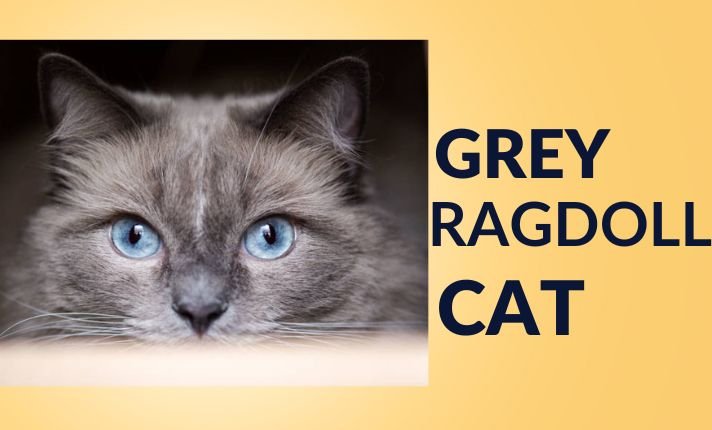Imagine a cat so amazing that it turns heads the moment it enters the room — meet the Grey Ragdoll, a living cloud of silver fur with beautiful blue eyes and a highly affectionate, gentle personality. These cats are not just attractive; they are famous for their loving, relaxed natures, happily snuggling in your arms and bringing calming companionship to any home.
So, if you hear “grey ragdoll,” “blue ragdoll,” or “blue point ragdoll,” they all mean the same thing — a ragdoll cat, describing a diluted version of the black gene that results in a soft, silvery-blue or bluish-gray hue appearance on the points (face, ears, paws, and tail) and sometimes across the body. It is just a color, not a variety or breed of cat.
In this article, we cover everything you need to know about Grey Ragdoll cats: their history, types, personalities, care needs, and more.
Origin and History Of the Ragdoll Cat
Ragdoll cat has an interesting history that traces their origins back to the 1960s in the United States. The ragdoll was developed by a breeder, Ann Baker, in Riverside, California. Ann started with a domestic long-haired cat named Josephine, who was a Persian mix. Josephine’s kittens, which showed special temperament and size characteristics, were bred to other cats with similar characteristics.
Josephine’s offspring were famous for their relaxed manner and affectionate nature. They were known to limp, especially when picked up, which is why Ann Baker coined the name Ragdoll, referring to their easy-going, floppy nature. Over time, the breed was refined and recognized for its large size, striking blue eyes, and silky coat.
Over time, some Ragdoll kittens developed a silvery-blue color or blue-gray hue, and they were officially called “blue Ragdolls.” However, many people casually call them “grey Ragdolls” because of their blue-gray appearance.
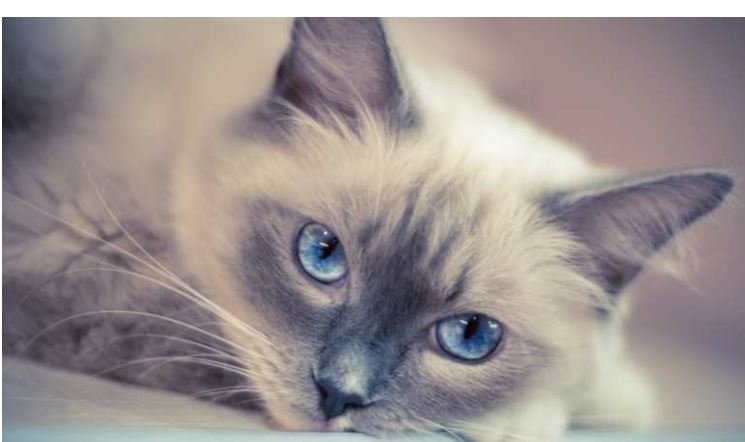
Personality & Temperament
Grey Ragdoll cats are often described as “puppy-like” due to their loyalty and unique mix of characteristics. They love to follow their owner around the house, greeting them at the door, and even learning easy commands. They thrive on attention and often enjoy being held or cuddled, making them the ideal lap cat.
Grey Ragdolls are smart and playful, but they do not overly energetic temperament. These cats enjoy engaging games, chasing toys, and learning easy tricks, but they’re not as overactive or naughty as some other breeds
These cats are not a particularly vocal breed, but they do communicate with soft chirps and meows, especially when looking for attention.
Gray Ragdoll cats do not enjoy being left alone for long periods, and they become lonely or depressed if left alone too long. For this reason, they do best in homes where someone is present frequently or where they have other pets to keep them company.
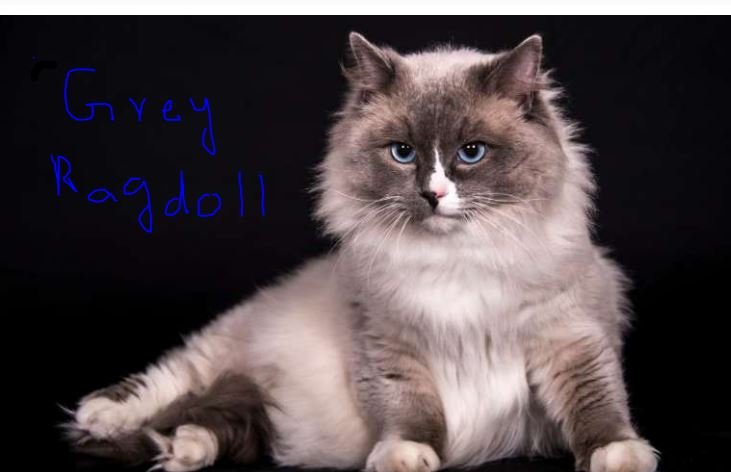
Types of Grey Ragdoll Cats
1. Grey and White Ragdoll Cat:
Gray and white Ragdoll cats have a mixture of gray patches and white fur. Often, their faces are decorated with a grey mask while their bodies are a mix of gray and white patches. The gray color often appears on their ears, back, and tail, while they have pure white markings on their chest, paws, and sometimes their faces.
2. Dark Grey Ragdoll Cat
Dark Grey Ragdoll cats have a deep, smoky brown color that sometimes looks almost like charcoal. These cats have a rich, solid color that sets them apart from other lighter grey Ragdoll cats. Their coats may still exhibit generally Ragdoll patterns, such as colorpoint or mitted, but with darker shades of Grey.
3. Black and Grey Ragdoll Cat
Black and grey Ragdoll cats are rare and unique. They often have a mixture of black fur with several shades of grey, which gives a marbled or shaded appearance. This combination of colors can be seen in their patterns, where grey can be mixed with black, creating a unique contrast. These Ragdolls maintain the classic characteristics of the breed.
4. Grey Tabby Ragdoll Cat
Grey Tabby Ragdoll cats are quite special because of their tabby pattern with Ragdoll features. Their fur has a prominent grey base color but is covered in dark stripes, spots, or swirls that create the tabby pattern.
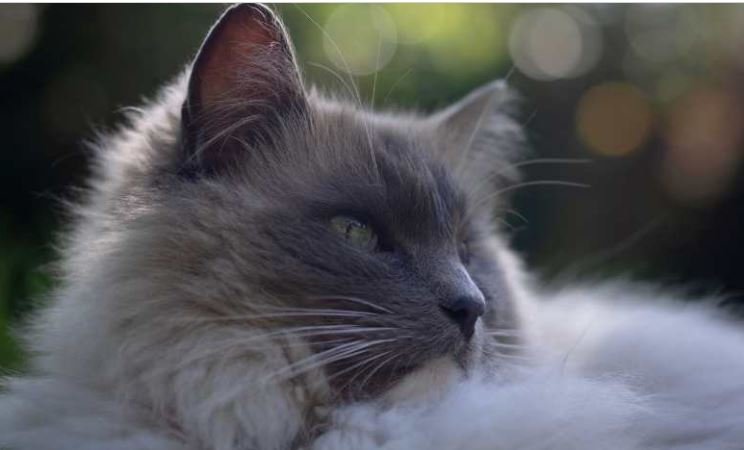
Grooming Requirement
Grooming the grey Ragdoll is important to keep their luxurious, semi-long coat healthy and beautiful. Brush your cat at least 2 to 3 times in a week, using a soft slicker brush and steel comb to remove loose hair and prevent matting, particularly around the neck, behind the ears, and down the legs, where tangles are more likely to occur. During shedding seasons, increase daily brushing.
Trim your cat’s nails every 2 to 4 weeks, check their ears weekly for wax or dirt, and softly wipe away any eye discharge with a wet cloth. Dental care is also important—try to brush your cat’s teeth a few times a week
Health Care
Grey Ragdolls are generally a healthy breed, but they are prone to some health issues, including hypertrophic cardiomyopathy (HCM) and polycystic kidney disease (PKD), which can be monitored with regular check-ups. Responsible breeders will often screen for HCM to reduce the risk of passing it on to kittens.
Other common issues include urinary tract infections and dental disease, making a balanced diet and regular dental care essential.
Nutrition
Grey Ragdolls are large cats and need more food than other cats, so they need a diet that’s high in animal protein (like chicken, turkey, or fish) and healthy fats, with small carbohydrates to help their size and energy. Feed adult Ragdoll cats two weighed meals a day, use a mix of wet and dry food—wet food helps with hydration and kidney health, while dry food can support dental care. Most adults need about 250–350 calories daily, but always check the food label and adjust based on your cat’s activity and weight
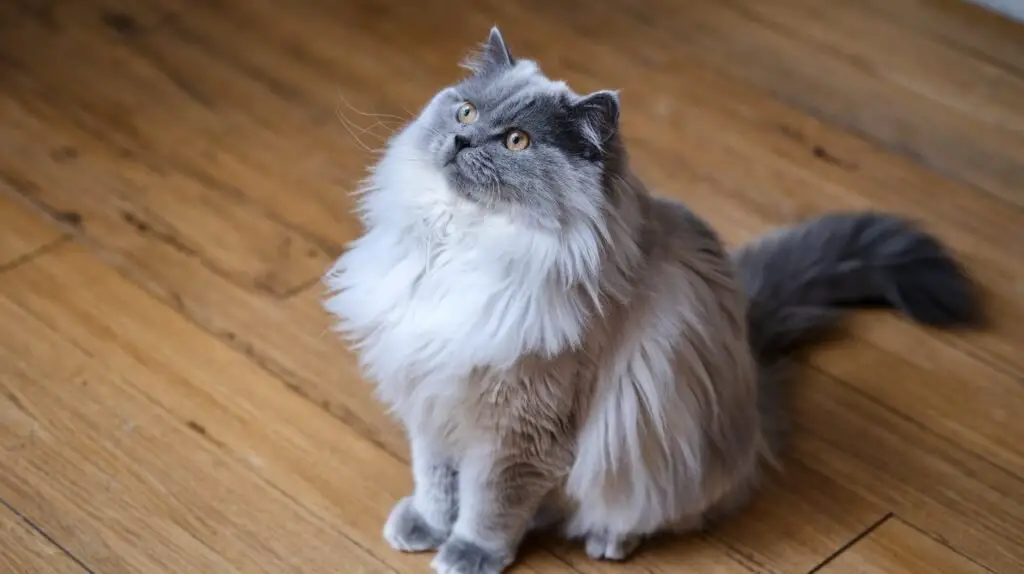
Exercise
Gray Ragdolls are moderate-energy cats; they need at least 15–20 minutes of exercise daily. Split up the exercise into 2 or 3 short sessions to satisfy their natural energy and reduce boredom. Use engaging toys like feather sticks, balls, or laser pointers to inspire running, jumping, and chasing, as these activities help maintain a healthy weight and strengthen their muscles.
How Long Do Grey Ragdoll Cats Live?
On average, Grey Ragdoll cats live between 12 to 15 years. However, with proper care, regular vet check-ups, and a healthy diet, some Ragdolls can live even longer—up to 17 or 18 years.
Conclusion
The Grey Ragdoll cat is a stunning and affectionate breed that can bring immense joy and comfort to any home. Their beautiful grey coat, striking blue eyes, and loving temperament make them one of the most beloved Ragdoll variations. If you are looking for a loyal, gentle, and playful companion, the Grey Ragdoll might just be the perfect addition to your family. Consider visiting a breeder or adoption center to meet one of these magnificent cats in person—you may just fall in love at first sight.

Hey guys, My name is Simon Smith. I’m from Canada and live near Victoria
I live with my sweet family and have 20+ Ragdolls of different types. I love them as my children. My profession is as a hotel manager.
I love to keep Ragdolls and grow their breeder case. I have 7 years of experience.
I’m an expert in cat care. So, I’m here to provide you with new information about my cats daily. This is my blog website, so I request that you kindly visit our site daily.
If you’re a Ragdolls lover and you have any questions or confusion about cats, text me on the Contact Us page or Gmail.
Thank u
